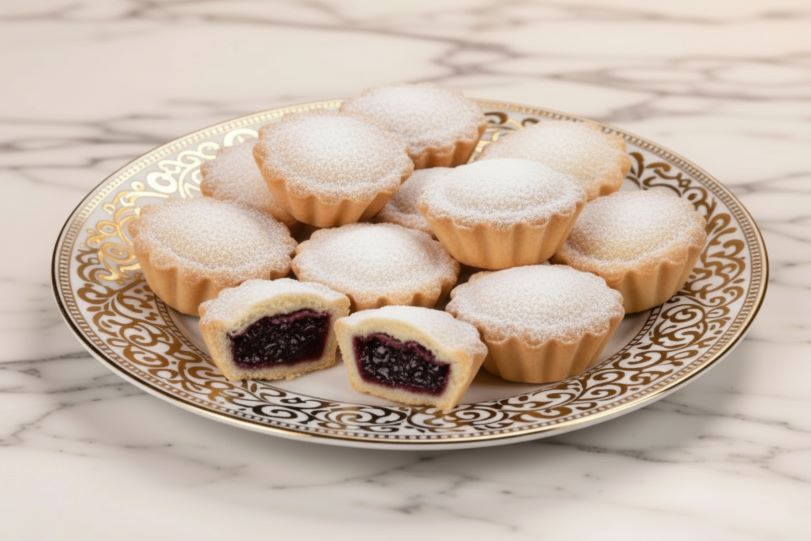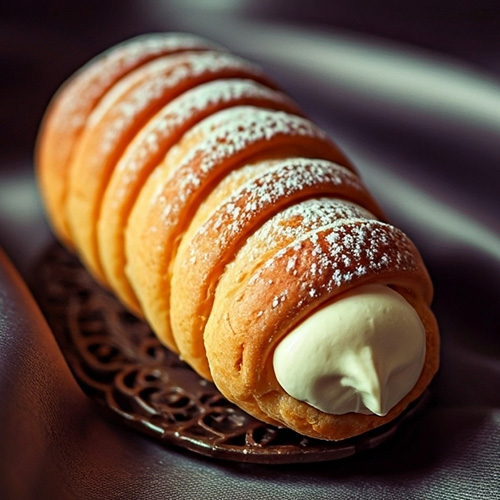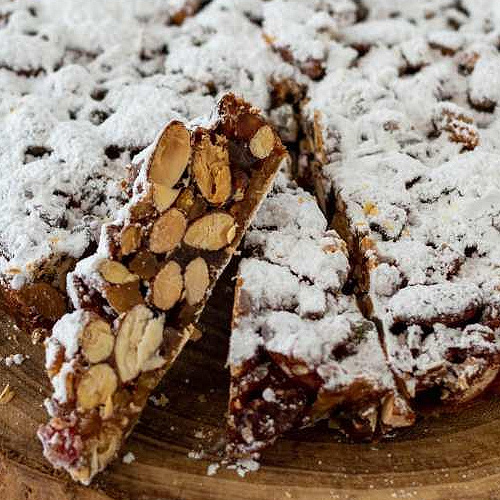Authentic Bocconotto Recipe
In Italy, every region tells a story through its sweets, and Bocconotto is one of the most charming. Born in the heart of southern Italy, this small, delicate tart carries centuries of tradition. It reflects creativity, trade, and an endless love for indulgence.
The name bocconotto comes from boccone, meaning “a bite.” That’s exactly what it is a tiny pastry packed with creamy, rich sweetness. Many regions claim its origin, but most agree that it began in Abruzzo, with strong ties to Puglia, Calabria, and Basilicata.
A Sweet Legend
These Italian Bocconotti are made with a rich, buttery pastry and filled with a luscious blend of chocolate and almonds.
The most famous tale begins in Castel Frentano, a small town in Abruzzo. According to legend, a young maid wanted to surprise her master, who adored chocolate, a rare luxury in the 18th century. She gathered what she had in her kitchen: eggs, sugar, almonds, and a bit of cocoa. From those humble ingredients, she created something extraordinary, a small tart so delicious that it soon became the pride of the town.
Regional Traditions
Like many Italian desserts, Bocconotto changes character from one town to the next.
Abruzzo, the filling blends dark chocolate, almonds, and sometimes coffee, bold, rustic, and full of depth.
Puglia, bakers favor silky pastry cream or cherry jam, echoing the region’s love for lighter, fruitier flavors.
Calabria, a spiced version often appears, perfumed with cinnamon or citrus zest.
No matter the variation, each one shares a buttery, crumbly shell that hides a warm, comforting heart.
Italy’s Tiny Pastry with a Big Tradition
Italians bake it for Christmas, weddings, and family gatherings, where sweetness always means togetherness. The recipe honors patience, care, and the simple art of turning everyday ingredients into something special.
Baked vs. Fried Bocconotti
Traditionally, Bocconotti are baked in the oven, giving them a tender, crumbly shell and a golden color. However, some regions especially parts of Calabria and Puglia prefer the fried version.
To fry:
Heat neutral oil (like sunflower or vegetable) to 350°F (175°C) in a deep pan.
Shape and fill the pastries as usual but skip the top dough layer.
Fry until golden on both sides, about 2–3 minutes per side.
Drain on paper towels, cool slightly, and dust with powdered sugar.
The fried version is crispier and richer, while the baked one stays buttery and delicate both are irresistibly good.
No Almonds? Replace them with ground hazelnuts or walnuts.
For a Lighter Taste: Try pastry cream or cherry jam instead of chocolate filling.
Flavor Variations
Lemon Cream Bocconotti: Swap the chocolate-almond filling with lemon-scented pastry cream for a bright, refreshing twist.
Cherry Jam Bocconotti: Fill with dark cherry or blackberry jam for a fruity, slightly tart version.
Coffee & Cocoa Bocconotti: Add an extra teaspoon of espresso powder to the chocolate filling for a richer, more aromatic flavor.
Nutty Twist: Replace almonds with hazelnuts or walnuts for a deeper, earthy taste.
Cinnamon & Citrus: Mix a pinch of cinnamon and orange or lemon zest into the filling for a warmly spiced variation.
Chocolate-Hazelnut: Blend Nutella with chopped chocolate and a few ground hazelnuts for a decadent, modern take.
Serving
Bocconotti are best enjoyed at room temperature, lightly dusted with powdered sugar. Grab one with a cup of strong espresso, a sip of dessert wine, or a small glass of limoncello, it’s the perfect little treat to brighten any moment. They work beautifully for holidays, family gatherings, or just a cozy afternoon at home. Fresh is always best, but they stay tasty for a few days when stored in an airtight container.
Storage
Keep your Bocconotti fresh in an airtight container at room temperature for up to 4 days. You can also refrigerate them for up to a week, just bring them to room temperature before serving so the pastry stays tender.
For longer storage, Bocconotti freeze beautifully. Place them in a single layer on a baking sheet and freeze until firm, then transfer to a freezer-safe container or bag. They’ll keep for up to 2 months. To enjoy, thaw at room temperature and dust with powdered sugar before serving. For fried versions, try to eat within 2 days for the best texture.













